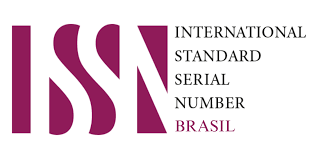SEED SOWING ORIENTATION RELATED TO SEED COAT ADHERENCE ON WATERMELON
DOI:
https://doi.org/10.37856/bja.v87i3.32Resumo
Watermelon (Citrullus lanatus (Thunb.) Matsum & Nakai) seedlings generally present issues regarding to seed coat adherence to cotyledons at the emergence stage. In this case, the seed coat acts as a barrier for seedling development, which may result in stretched or malformed seedlings. Therewith, this study was carried out to evaluate the effects of seed orientation in the substrate on seedling emergence and growth, and also to evaluate the effect on seed coat adherence. Diploid, triploid and tetraploid watermelon seeds were used in this study. The treatments were composed of four seed lots and three different seed orientations at sowing: hilum pointed upwards (HUp), hilum pointed downwards (HDown) and hilum pointed horizontally (HHor). The evaluations consisted of: seedling emergence, seedling speed index, seedling height, seedling dry mass and seed coat adherence to cotyledons. HUp presented lower results for seed coat adherence to cotyledons, but negatively interfered on seedlings emergence and growth. In general, the treatment HHor presented the most satisfactory results, even though it did not solve the seed coat adherence issue.Referências
BOSY, J; AARSSEN, L. W. 1995. The effects of seed orientation on germination in a uniform environment: differential success without genetic or environmental variation. Journal of Ecology, v.83, p. 769-773.
BOWERS, S.A; HAYDEN, C.W. 1972. Influence of seed orientation on bean seedling emergence. Agronomy Journal, v.64, p. 736-738.
CANTLIFFE, D. J. 1984. Seed orientation, seed quality and their effect on emergence and sex expression in cucumber. Proc. Fla. State. Hort. Soc., v.97, p. 174-176.
CASTRO, J; HÓDAR, J.A.; GÓMEZ, J.M. 2006. Seed Size. In: BASRA, A.S.(editor), Handbook of Seed Science and Technology. New York: The Haworth Press, 795p.
FAOSTAT (Food and Agriculture Organization of the United Nations). 2007. Available online at http://www.fao.org
GRANGE, S.; LESKOVAR, D.I.; PIKE, L.M.; COBB, B.G. 2000. Excess moisture and seed coat alteration influence germination of triploid watermelon. Hort Science, v.35, p. 1355-1356.
GRANGE, S.; LESKOVAR, D.I.; PIKE, L.M.; COBB, B.G. 2003. Seed coat structure and oxygen-enhanced environments affect germination of triploid watermelon. J. Amer. Soc. Hort. Sci., v.128, n.253-259.
ISTA (Internacional Seed Testing Association). 2004. Internacional Rules for Seed Testing, Fourth Edition. Zurich.
JASKANI, M.J; KWON, S.W.; KIM, E.J.; KO, B.R. 2004. Polyploidy affects fruit characteristics, seed morphology, and germination in watermelon. J. Kor. Soc. Hort. Sci. v.45, n.5, p.233-237.
JASKANI, M.J.; Kwon, S.W.; Kim, D.H. 2005. Comparative study on vegetative, reproductive and qualitative traits of seven diploids and tetraploids watermelon lines. Euphytica, n.145, p.259-268.
JASKANI, M.J.; KWON, S.W.; KIM, D.H.; ABBAS, H. 2006. Seed treatments and orientation affects germination and seedling emergence in tetraploid watermelon. 1951. Pak. J. Bot., v.38, n.1, p.89-98.
KIHARA, H. Triploid Watermelons. Proc. Amer. Soc. Hort. Sci. n.58, p.217-230.
MAGUIRE, J.D. 1962. Speed of germination aid in selection and evaluation for seedling emergence and vigor. Crop Science, Madison, v.2, n.2, p.176-77.
MARTINS, C.C; NAKAGAWA, J.; BOVI, M.L.A. 1999. Efeito da posição da semente no substrato e no crescimento inicial das plantas de palmito-vermelho. Revista Brasileira de Sementes, v.21, n.1, p.164-173.
MAYNARD, D.N. 1989. Triploid watermelon seed orientation affects seed coat adherence on emerged cotyledons. Hort Science, n.24, p.603-604.
MAYNARD, D. N. Watermelons: Characteristics, Production and Marketing. 2001. Alexandria: ASHS Press, 227p.
ROBLES, W.G.R; ARAÚJO, P.S.R.; MINAMI, K. 2000. Desenvolvimento de plântulas de limoeiro ‘cravo’ relacionado à posição de semeadura. Scientia Agricola, v.57, n.2, p.371-373.
SARGENT, S.A.; MAYNARD, D.N. 2009. Postharvest Biology and Technology of Cucurbits. In: JANICK, J. (editor) Horticultural Reviews, v.35, 529p.
SAS Institute Inc. 2000. SAS/STAT. User’s Guide, version 8.0. Cary.
SILVA E SILVA, B.M.; MÔRO, F.V.; SADER, R.; KOBORI, N.N. 2007. Influência da posição e da profundidade de semeadura nas plântulas de açaÃ. Revista Brasileira de Fruticultura, v. 29, n.1, 187-190.
SUN, X. 2009. China Seedless Watermelon Research and Application. China Agriculture Press, 116p.
TAIZ, L.; ZEIGER, E. 2010. Plant Physiology, 5th Ed. Sunderland: Sinauer Associates, Inc., 782p.











